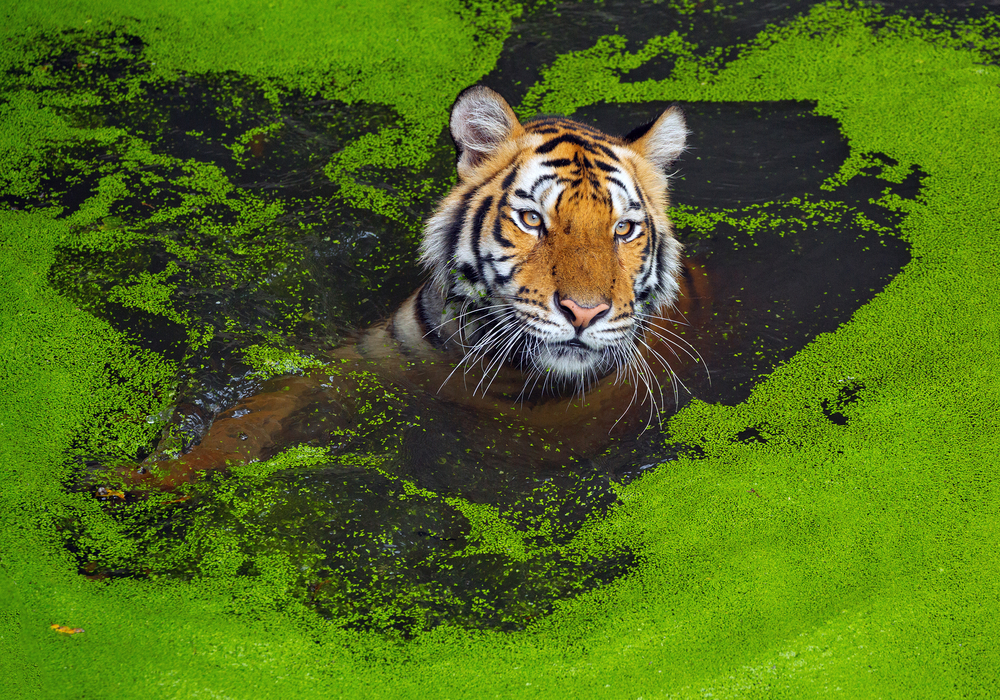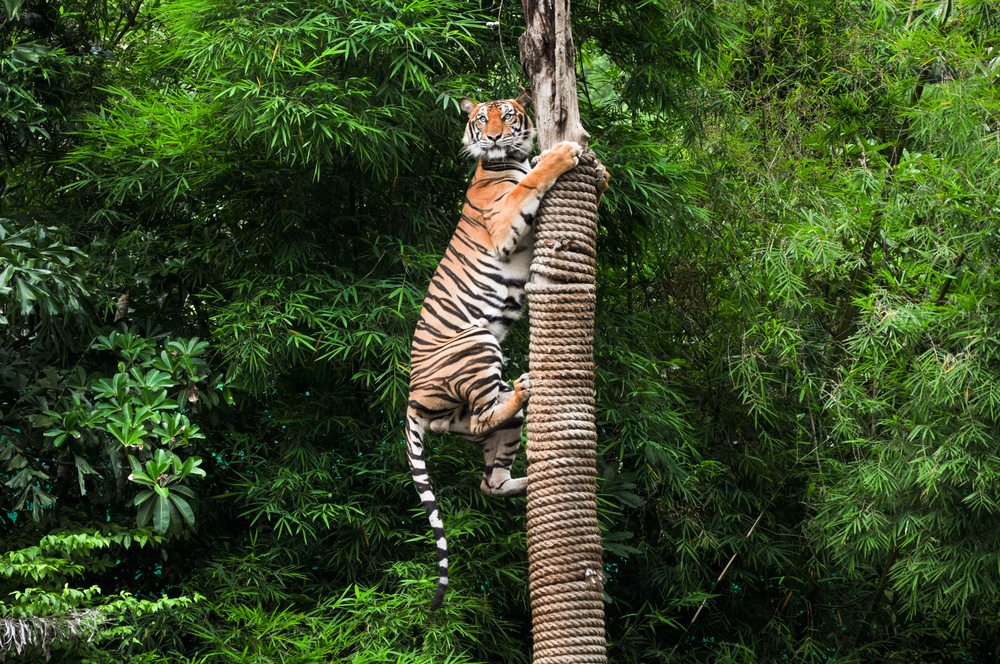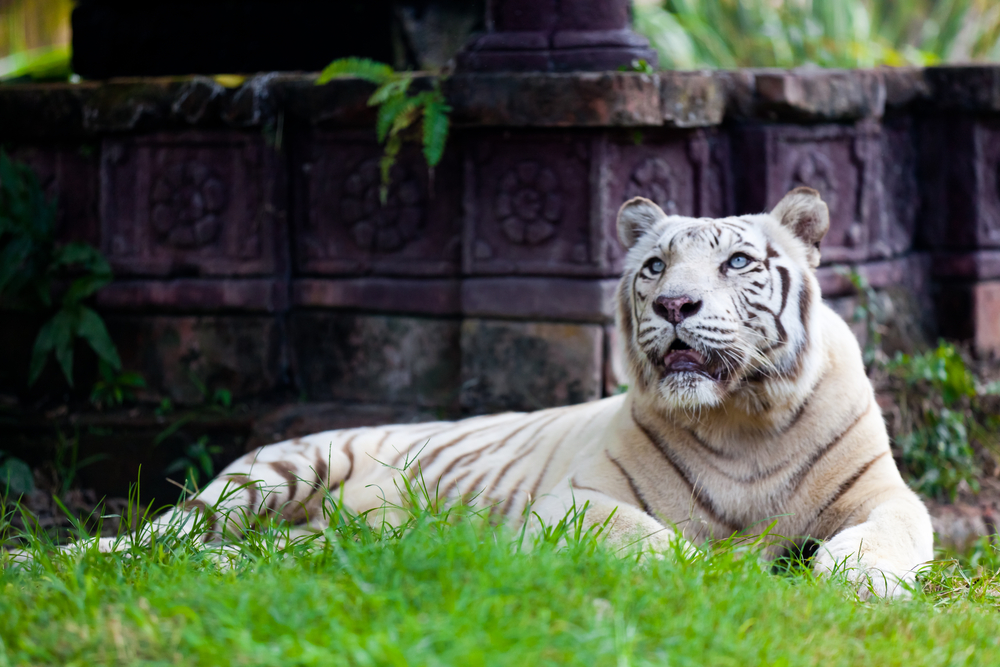The Royal Bengal Tiger is the national animal of India because of its rich cultural history, abundance, characteristics and conservation efforts.
In April 1972, the Royal Bengal Tiger was declared to be the national animal of India. The national animal of a country is often a symbolic representation of the country’s rich heritage and culture. With that in mind, there are several criteria for choosing a national animal.
A country should identify itself with the characteristics displayed by the animal. The animal should naturally be indigenous to that country, be in abundance, and be a symbol of the history of the country, as well as add to the visual beauty and appeal of the nation. A country can also select a national animal on a conservation basis if it needs to be protected in order to continue its survival.
India’s History With The Royal Bengal Tiger
India’s association with the Bengal tiger dates back to 25th century BCE, when it was carved on the Pashupati seal of the Indus Valley Civilization. The tiger, along with many other animals like peacocks and cows, were worshipped in that pre-Aryan society.
Siva, the ancient god of the pre-Aryan society, always had a tiger beside him, which is seen in the seals engraved of Mohenjodaro. A small community in Northern India called Baghel Rajputs are descendants of the tiger worshippers, so they never hunt them. The tiger was also a symbol of the Chola Empire (300CE-1279 CE). In Indian mythology, Goddess Durga uses the tiger as her vehicle.
The Royal Bengal Tiger is also displayed on Indian currency notes and postal stamps. Prior to the Royal Bengal Tiger, the lion was the national animal of India.
Also Read: Lion Vs Tiger: Which Would Win In A Fight?
Royal Bengal Tiger Facts

The Bengal Tiger goes by the scientific name Panthera Tigris Tigris. For India, the Royal Bengal Tiger symbolizes strength, grace and agility. It is one of the most lethal and majestic carnivores of the Indian fauna, and their average lifespan ranges from 8-10 years in the wild. The Royal Bengal Tiger is one among eight tiger species found in the country and is one of the largest four big cats. They are solitary animals that mark their territory with urine and claw marks. They are also nocturnal in nature, meaning that they are most active during the night.
They lounge around during the day and hunt once the sun goes down. Bengal tigers also have the ability to climb trees and swim. They hunt their prey by pouncing on them and severing the spinal cord! Clearly, an impressive animal like this demands respect.
Distribution
Royal Bengal Tigers are spread over the Indian subcontinent, except for the northwestern region of India. They are found in abundance in the states of Madhya Pradesh, Uttarakhand, West Bengal, Karnataka, Odisha and Andhra Pradesh. This species is also found in the neighboring countries of Bhutan, Myanmar, Bangladesh and Sri Lanka.

According to the 2016 census, there are 2,500 Bengal Tigers in the country. This might not look like a very large number in a country with more than one billion people, but the species was once endangered. The state of Karnataka has the highest population of Bengal Tigers in the country. Bandipur National Park in Karnataka boasts 408 tigers, followed by 340 tigers in Uttarakhand and 304 in the state of Madhya Pradesh. This statistic fulfills the “abundance” criterion of the national animal.
Also Read: Can Humans And Leopards Share A Metropolis?
How Does The Bengal Tiger Represent Physical Beauty And Appeal?
Without a doubt, the Royal Bengal Tiger is a majestic carnivore. It even has an adjective attached to its name! They have vertical black stripes on their reddish-brown to golden orange-colored fur, along with a white belly. The colors themselves speak for the animals’ personality of power, strength and grace. An interesting observation is that the Royal Bengal Tiger has saffron (orange) and white on its body, which are two of the colors of the Indian national flag.
Are Bengal Tigers Also White? How!

Some Royal Bengal Tigers also have a white fur and brown stripes instead of black. However, this does not mean that they’re another species. The white color is the result of a gene mutation that produces a pigment called pheomelanin, giving the animal its white color. Just as our fingerprints are unique, each Bengal Tiger can be identified by its unique pattern of stripes. No two Bengal tigers have the same arrangement of stripes on their body.
How Can A National Animal Be Endangered?
Actually, because the Royal Bengal Tiger was growing endangered, it was made the national animal in 1973 to raise awareness and gain more help in conserving the species. Prior to the Bengal tiger, the lion was the national animal of India. The Bengal Tiger was being poached for its beautiful fur, bones and teeth, which were used as coats, rugs, jewelry and for the production of various medicines. Along with illegal poaching, the tigers were losing their natural habitat due to increased urbanization, deforestation and pollution.
‘Project Tiger’ was launched by the government of India in 1973 to save the Royal Bengal Tigers from extinction. Serious law enforcement policies were put in place to ban poaching in the national parks. Villages were relocated to minimize human-animal conflict, which often resulted in the tigers being shot for safety. The destruction of natural habitats like the Sundarbans was rectified. More wildlife reserves were created in the country. Currently, there are 27 tiger reserves in India and the population of the tigers have nearly doubled from 1477 in the 2000s to 2500 in 2016.
The Royal Bengal Tiger has rightfully earned its position as the national animal of India due to its rich cultural history, abundance, majestic personality and physical beauty. The love that India has shown to save it from extinction through ‘Project Tiger’ is proof of the country’s respect for this proud animal, hopefully saving it from the claws of extinction!
Do you remember why the tiger is the national animal of India?

References (click to expand)
- National Identity Elements - National Animal - Know India. Government of India
- Cultural Traditions Of Nature Conservation In India - ccrtindia.gov.in
- Tiger – a national symbol of India since Indus Valley Civilisation. indiantribalheritage.org
- National Animal of India (Royal Bengal Tiger) - CulturalIndia.net. culturalindia.net
